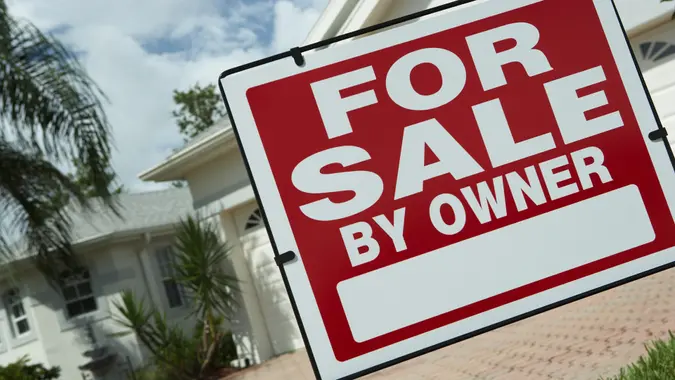2 Regions in the US Where the Housing Market Is Starting To Shift

Commitment to Our Readers
GOBankingRates' editorial team is committed to bringing you unbiased reviews and information. We use data-driven methodologies to evaluate financial products and services - our reviews and ratings are not influenced by advertisers. You can read more about our editorial guidelines and our products and services review methodology.

20 Years
Helping You Live Richer

Reviewed
by Experts

Trusted by
Millions of Readers
Is the overall housing market in the United States “healing” as we head into the late-summer period? Some experts say yes.
At the same time, with a lot of buyers and sellers closely watching mortgage rates, there remains some volatility and uncertainty as we head into the middle of August and early September.
Prices and Inventory
According to Realtor.com, “Median home prices fell in July, marking the first-ever seasonal decline in a month that’s typically a peak time for home sales.” Overall, that downturn may be due to a sluggish summer housing market where buyers and sellers are waiting for more economic breaks before taking action. In fact, home sales are moving at the slowest rate since 2020.
Also, according to Realtor.com, the total number of homes for sale in July was about 37% higher than the year prior. That’s the nine consecutive months of growth.
“It now sits as a post-pandemic high,” said Ralph McLaughlin, a Realtor.com senior economist. “It’s a welcome sign that the housing market is normalizing, and it tells us the market is healing.”
In fact, according to the Realtor.com analysis, “All four regions of the U.S. saw an increase in active home listings, with the South leading the way at 47.6%, followed by the West at 35.4%, the Midwest at 22.7%, and the Northeast at 14.7%.”
Some Regional Shifts
To better understand how the housing market is faring in specific parts of the country, here’s a look at two regions in the U.S. – the Southwest and Southeast – where the market is starting to shaft.
Some of this information is based on an analysis from Fast Company. According to the analysis, “There is growing weakness in some pockets of the Southwest and Southeast, particularly in Gulf markets and Florida, while many resale housing markets in the Midwest, Northeast, and Southern California still remain tight.”
Southwest and Southeast
According to the Fast Company analysis, there is a great deal of weakness around the Gulf, particularly much of Florida, when it comes to how long homes are sitting on the market.
When it comes to days on the market, generally numbers above 80 are considered quite high. For example, in the Naples-Marco, Florida, market, the median number of days on the market in June was 85. In Panama City, it was 82.
Fast Company also looked at active home listings to assess home price momentum. If those listings start to go up rapidly with homes staying on the market for longer periods, it could hint at future pricing weakness. The Gulf Coast and places like Tampa and New Orleans have returned above pre-pandemic inventory levels. For comparison, most of the Midwest, Northeast and West Coast remain well below pre-pandemic levels.
Finally, let’s look at the change in metro home prices between June of 2023 and June of 2024. Parts of the Northeast and the Midwest have experienced significant home price growth. “Meanwhile, home prices in specific areas in Texas, Louisiana, Mississippi, and Southwest Florida, have softened or even declined over the past year,” according to the Fast Company analysis.
 Written by
Written by  Edited by
Edited by 

























